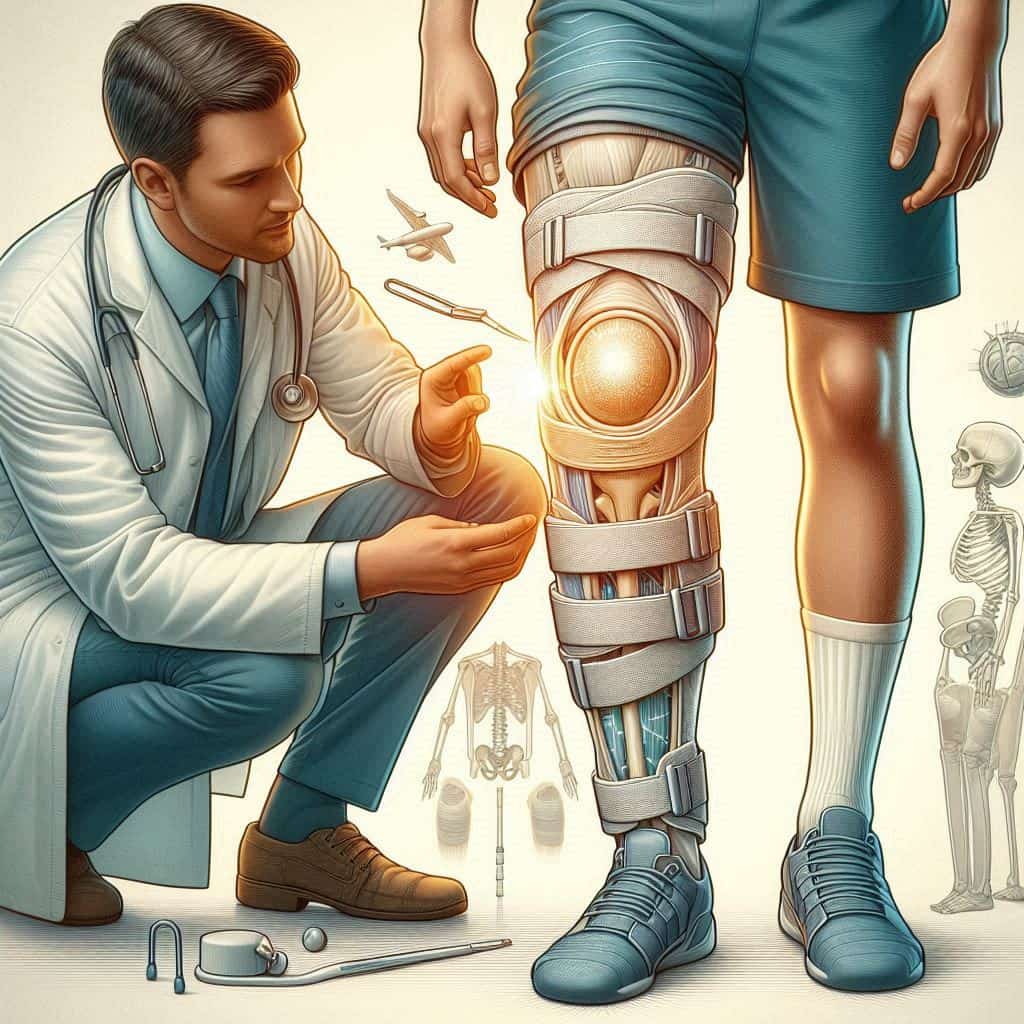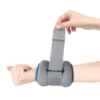Hey there! If you’ve ever hurt your knee or had knee surgery, you might have heard about knee immobilizers. These are simple devices that can make a big difference in your recovery. In this blog post, we’ll talk about what knee immobilizers are, how they work, and how they can help you manage pain and speed up your recovery.

What Are Knee Immobilizers?
Knee immobilizers are support devices that keep your knee from moving. They look like soft braces that wrap around your knee and are usually held in place with Velcro straps. They are longer than regular knee braces, often extending from your thigh to your shin, covering the entire knee area.
How Do Knee Immobilizers Work?
The main job of a knee immobilizer is to keep your knee joint from moving. By doing this, it helps your knee heal properly. Here’s how it works:
- Stability: When your knee is hurt, moving it can make the injury worse. A knee immobilizer keeps your knee stable, so it doesn’t move around and cause more damage.
- Support: The device supports your knee and takes some of the weight off it, which can reduce pain and make it easier to walk or stand.
- Protection: It protects your knee from accidental bumps or twists, which can be really painful and harmful when you’re recovering from an injury or surgery.
Types of Knee Injuries That Need Immobilizers
There are several types of knee problems where a knee immobilizer can be really helpful:
- Ligament Injuries: Your knee has ligaments that help keep it stable. If you tear one of these ligaments, like the ACL (anterior cruciate ligament), a knee immobilizer can help keep your knee stable while it heals.
- Fractures: If you break a bone in your knee, an immobilizer can keep the bones in the right position while they heal.
- Knee Surgery: After surgeries like knee replacement or ligament repair, a knee immobilizer can help keep your knee stable and reduce pain during recovery.
- Dislocations: If your knee cap gets dislocated, a knee immobilizer can help keep it in place while the surrounding tissues heal.
Benefits of Using Knee Immobilizers
Using a knee immobilizer comes with several benefits that can make your recovery process smoother and less painful.
Pain Relief
One of the biggest benefits of using a knee immobilizer is pain relief. By keeping your knee stable and supported, it reduces the amount of movement that can cause pain. This makes it easier to go about your day without constantly worrying about knee pain.
Faster Recovery
When your knee is stable, it can heal more quickly. The immobilizer helps prevent further injury and allows the tissues in your knee to repair themselves without being disturbed. This can shorten the overall recovery time.
Ease of Use
Knee immobilizers are generally easy to put on and take off. They usually have Velcro straps that you can adjust for a comfortable fit. This makes them convenient to use, even if you have to wear them for a long period.
Mobility
Although a knee immobilizer keeps your knee from moving, it can help you stay more mobile. By reducing pain and providing support, it makes it easier to walk or move around without putting too much strain on your knee.
How to Use a Knee Immobilizer
Using a knee immobilizer is pretty straightforward, but there are a few tips that can help you get the most out of it.
- Follow Doctor’s Orders: Always follow the instructions given by your doctor or physical therapist. They will tell you how long to wear the immobilizer and when you can start moving your knee again.
- Proper Fit: Make sure the immobilizer fits well. It should be snug but not too tight. You should be able to slide a finger between the immobilizer and your skin.
- Skin Care: Check your skin regularly for any signs of irritation or sores. If you notice any problems, let your doctor know.
- Cleaning: Keep the immobilizer clean. You can usually remove it for short periods to wash your skin and the device itself.
Conclusion
Knee immobilizers are simple but effective devices that can play a big role in your recovery from knee injuries or surgery. They provide stability, support, and protection, helping to reduce pain and speed up the healing process. If you find yourself dealing with a knee issue, talk to your doctor about whether a knee immobilizer might be right for you. By using it properly and following your doctor’s advice, you can get back on your feet faster and with less discomfort. So, take care of your knees and give them the support they need to heal!
FAQs: Knee Immobilizers
Yes, you can sleep with a knee immobilizer. In fact, your doctor may recommend it to keep your knee stable at night. Just make sure it’s not too tight, and you’re comfortable.
The length of time you need to wear a knee immobilizer depends on your specific injury and your doctor’s advice. It could be a few weeks to a couple of months.
You should avoid strenuous activities while wearing a knee immobilizer. However, your doctor or physical therapist may give you some gentle exercises to do that won’t put too much strain on your knee.
No, a knee immobilizer is different from a regular knee brace. A knee brace allows for some movement and is usually used for support during activities. A knee immobilizer, on the other hand, keeps your knee completely still to help it heal.

